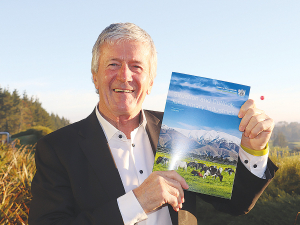MPI launches industry-wide project to manage feral deer
An industry-wide project led by Ministry for Primary Industries (MPI) is underway to deal with the rising number of feral pests, in particular, browsing pests such as deer and pigs.
 Agriculture Minister Damien O’Connor concedes there is unlikely to be the same growth for primary sector returns in the year ahead.
Agriculture Minister Damien O’Connor concedes there is unlikely to be the same growth for primary sector returns in the year ahead.
Some good news - albeit temporary for primary exports.
MPI's latest Situation and Outlook report for Primary Industries (SOPI) shows that food and fibre exports will hit a record $56.2 billion dollars to the year ended 30 June 2023 - an increase of 6% on 2022.
Leading the way is the dairy sector with revenue from that sector set to increase by 14% to reach $25.1 billion for the year - despite a slight decline in milk production.
Conversely meat and wool export revenue is expected to decrease 3% to $11.9 billion for the year to 30 June 2023 - due to key meat export prices falling with the global cost-of-living crisis straining household budgets and COVID-19 challenges in China. This trend is set to continue for the next four years. MPI says the lower export prices are expected to be partially offset by higher production and export volumes for beef, lamb and mutton.
Export revenue from horticulture is expected to increase 2% to $6.9 billion, driven by the large wine vintage of 2022 offsetting lower production and exports of kiwifruit, apples, avocados and vegetables.
However, that's where the good news stops because growth in export revenue for 2024 until 2027 will remain pretty much static.
Not surprisingly horticulture, which has been hit by frosts and floods, will be going through a rebuilding phase - although some kiwifruit growers expect to be back in serious production in the next season. MPI estimates the total cost of Cyclone Gabrielle to be between $2 billion and $2.4 billion including asset damage as well as crop loss. The report devotes a whole section to the effects of the cyclone setting out the well aired effect this has had on farmers, growers, processors and the market.
The report also notes that the global economy is slowing down but poised for recovery. It says the word economy proved to be more resilient to the shocks arising from Russia's conflict with Ukraine while that labour market remains tight but shows signs of easing.
Agriculture Minister Damien O'Connor says the $56.2 billion figure is $1.2 billion dollars more this year than had been predicted. He says NZ has been through a pretty tough time with inflationary pressures and notes there is unlikely to be the same growth in the year ahead.
O'Connor says a focus in the report of what is described as 'hyper traceability' - identifying more precisely what's happening in the marketplace. He says there are expectations both from the supermarkets and the consumers, who are now using a QR code to find out exactly where their products are coming from, and that the primary sector needs to be aware of the implications of this.
The National Wild Goat Hunting Competition has removed 33,418 wild goats over the past three years.
New Zealand needs a new healthcare model to address rising rates of obesity in rural communities, with the current system leaving many patients unable to access effective treatment or long-term support, warn GPs.
Southland farmers are being urged to put safety first, following a spike in tip offs about risky handling of wind-damaged trees
Third-generation Ashburton dairy farmers TJ and Mark Stewart are no strangers to adapting and evolving.
When American retail giant Cosco came to audit Open Country Dairy’s new butter plant at the Waharoa site and give the green light to supply their American stores, they allowed themselves a week for the exercise.
Fonterra chair Peter McBride says the divestment of Mainland Group is their last significant asset sale and signals the end of structural changes.

OPINION: Your old mate welcomes the proposed changes to local government but notes it drew responses that ranged from the reasonable…
OPINION: A press release from the oxygen thieves running the hot air symposium on climate change, known as COP30, grabbed your…